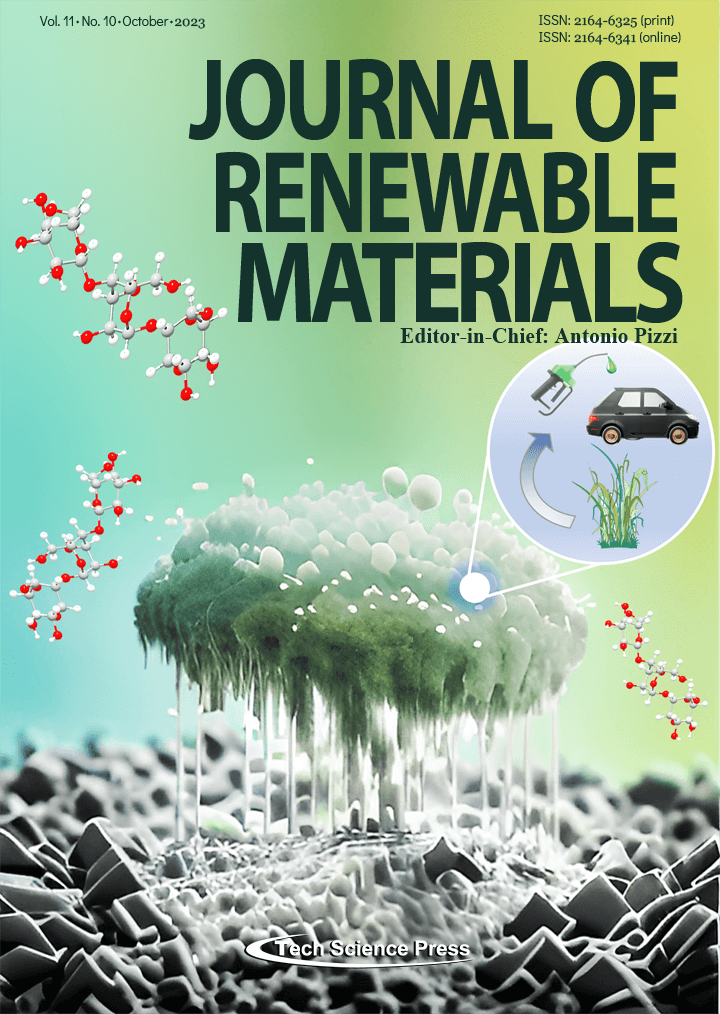Flexible Biofoams Based on Furanics and Fatty Acids Esterified Tannin
Elham Azadeh1, Ummi Hani Abdullah2,3, Christine Gerardin1,*, Antonio Pizzi1,*, Philippe Gerardin1, Cesar Segovia4
Journal of Renewable Materials, Vol.11, No.10, pp. 3625-3645, 2023, DOI:10.32604/jrm.2023.030373
- 10 August 2023
Abstract Water repellant, flexible biofoams using tannin esterified with various fatty acid chains, namely lauric, palmitic
and oleic acids, by reaction with lauryl chloride, palmitoyl chloride, and oleyl chloride were developed and their
characteristics compared with the equivalently esterified rigid biofoams. Glycerol, while initially added to control
the reaction temperature, was used as a plasticizer yielding flexible biofoams presenting the same water repellant
character that the equivalent rigid foams. Acetaldehyde was used as the cross-linking agent instead of formaldehyde, as it showed a better performance with the esterified tannin. The compression results showed a significant
decrease… More >
